
The Antarctic is a polar region around Earth's South Pole, opposite the Arctic region around the North Pole. The Antarctic comprises the continent of Antarctica, the Kerguelen Plateau and other island territories located on the Antarctic Plate or south of the Antarctic Convergence. The Antarctic region includes the ice shelves, waters, and all the island territories in the Southern Ocean situated south of the Antarctic Convergence, a zone approximately 32 to 48 km wide varying in latitude seasonally. The region covers some 20 percent of the Southern Hemisphere, of which 5.5 percent is the surface area of the Antarctica continent itself. All of the land and ice shelves south of 60°S latitude are administered under the Antarctic Treaty System. Biogeographically, the Antarctic realm is one of eight biogeographic realms of Earth's land surface.
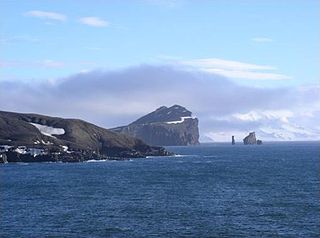
Deception Island is an island in the South Shetland Islands close to the Antarctic Peninsula with a large and safe natural harbour. This island is the caldera of an active volcano, which seriously damaged local scientific stations in 1967 and 1969. The island previously held a whaling station; it is now a tourist destination and scientific outpost, with Argentine and Spanish research bases. While various countries have asserted sovereignty, it is still administered under the Antarctic Treaty System.
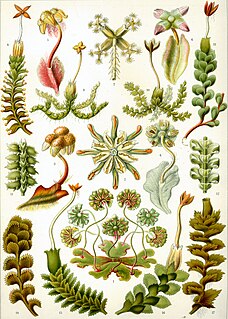
The Marchantiophyta are a division of non-vascular land plants commonly referred to as hepatics or liverworts. Like mosses and hornworts, they have a gametophyte-dominant life cycle, in which cells of the plant carry only a single set of genetic information.
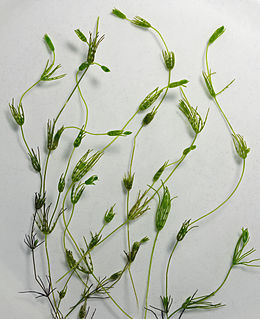
Non-vascular plants are plants without a vascular system consisting of xylem and phloem. Instead, they may possess simpler tissues that have specialized functions for the internal transport of water.
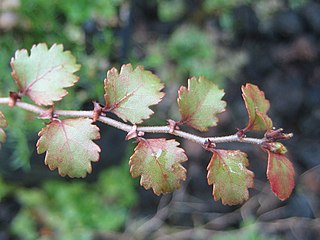
The Antarctic flora is a distinct community of vascular plants which evolved millions of years ago on the supercontinent of Gondwana. It is now found on several separate areas of the Southern Hemisphere, including southern South America, southernmost Africa, New Zealand, Australia and New Caledonia. Joseph Dalton Hooker was the first to notice similarities in the flora and speculated that Antarctica had served as either a source or a transitional point, and that land masses now separated might formerly have been adjacent.

The Antarctic realm is one of eight terrestrial biogeographic realms. The ecosystem includes Antarctica and several island groups in the southern Atlantic and Indian oceans. The continent of Antarctica is so cold that it has supported only 2 vascular plants for millions of years, and its flora presently consists of around 250 lichens, 100 mosses, 25-30 liverworts, and around 700 terrestrial and aquatic algal species, which live on the areas of exposed rock and soil around the shore of the continent. Antarctica's two flowering plant species, the Antarctic hair grass and Antarctic pearlwort, are found on the northern and western parts of the Antarctic Peninsula. Antarctica is also home to a diversity of animal life, including penguins, seals, and whales.

Jungermanniales is the largest order of liverworts. They are distinctive among the liverworts for having thin leaf-like flaps on either side of the stem. Most other liverworts are thalloid, with no leaves.

Hal Ronald Varian is Chief Economist at Google and holds the title of emeritus professor at the University of California, Berkeley where he was founding dean of the School of Information. Varian is an economist specializing in microeconomics and information economics.
Varian Associates was one of the first high-tech companies in Silicon Valley. It was founded in 1948 by Russell H. and Sigurd F. Varian, William Webster Hansen, and Edward Ginzton to sell the klystron, the first vacuum tube which could amplify electromagnetic waves at microwave frequencies, and other electromagnetic equipment. Varian Associates split into three companies in 1999: Varian Medical Systems, Varian, Inc. and Varian Semiconductor.
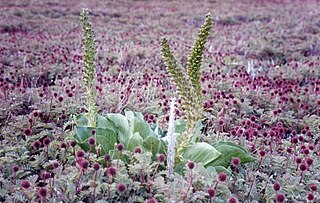
The Southern Indian Ocean Islands tundra is a tundra ecoregion that includes several subantarctic islands in the southern Indian Ocean.
This is a list of the flora of the South Sandwich Islands, a group of islands in the subantarctic Atlantic Ocean, part of the British overseas territory of South Georgia and the South Sandwich Islands. The list contains flora in the strict sense; that is, plants only. It comprises a single species of vascular plant, 38 mosses, and 11 liverworts. Unusually, not a single species is known to have naturalised on the islands; all are presumed native.

The West Cornwall Bryophytes Site of Special Scientific Interest is a group of seven locations of former mining activity, that form a single SSSI and Important Plant Area in western Cornwall, England, United Kingdom. The site is noted for its biological characteristics and derives its name from the rare bryophyte species found there.
Calaminarian grassland is grassland where the process of seral succession has been halted due to the toxicity of soils containing high levels of toxic metal ions. These habitats may be semi-natural on naturally exposed deposits, or the result of mining, or from erosion by rivers, sometimes including washed-out mine workings.
Hexagonocaulon is an extinct genus of bryophyte that lived during the Middle Triassic. Its fossils have been found throughout the Southern Hemisphere, including the Antarctic Peninsula.

The wildlife of Antarctica are extremophiles, having to adapt to the dryness, low temperatures, and high exposure common in Antarctica. The extreme weather of the interior contrasts to the relatively mild conditions on the Antarctic Peninsula and the subantarctic islands, which have warmer temperatures and more liquid water. Much of the ocean around the mainland is covered by sea ice. The oceans themselves are a more stable environment for life, both in the water column and on the seabed.
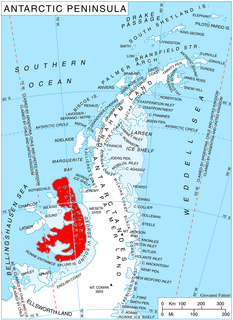
The Ablation Point – Ganymede Heights Antarctic Specially Protected Area is a 180 km2 mountainous tract of land on the eastern side of Alexander Island in the Bellinghausen Sea, west of Palmer Land on the Antarctic Peninsula. It has been designated Antarctic Specially Protected Area (ASPA) No.147 for its geological, geomorphological, glaciological, limnological, and ecological values, and to protect its terrestrial and freshwater ecosystems from uncontrolled human visitation and activity.

Esgyrn Bottom is a Site of Special Scientific Interest in Pembrokeshire, South Wales. It has been designated as a Site of Special Scientific Interest since January 1957 in an attempt to protect its fragile biological and geological elements. The site has an area of 49.9 hectares and is managed by Natural Resources Wales.
Cephaloziella elegans is a species of liverworts. It is found in the Russian Federation.
Cephaloziella elachista is a species of liverwort belonging to the family Cephaloziellaceae.













